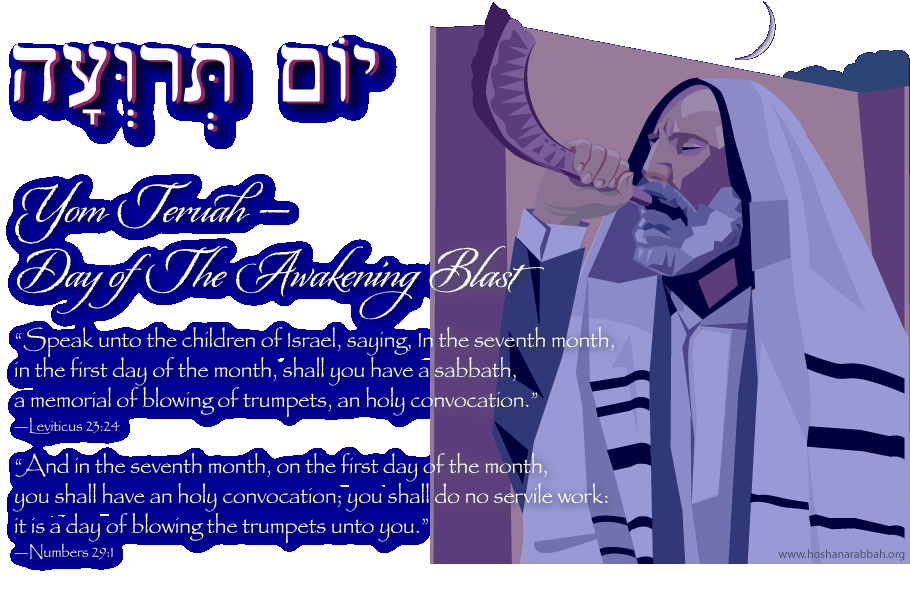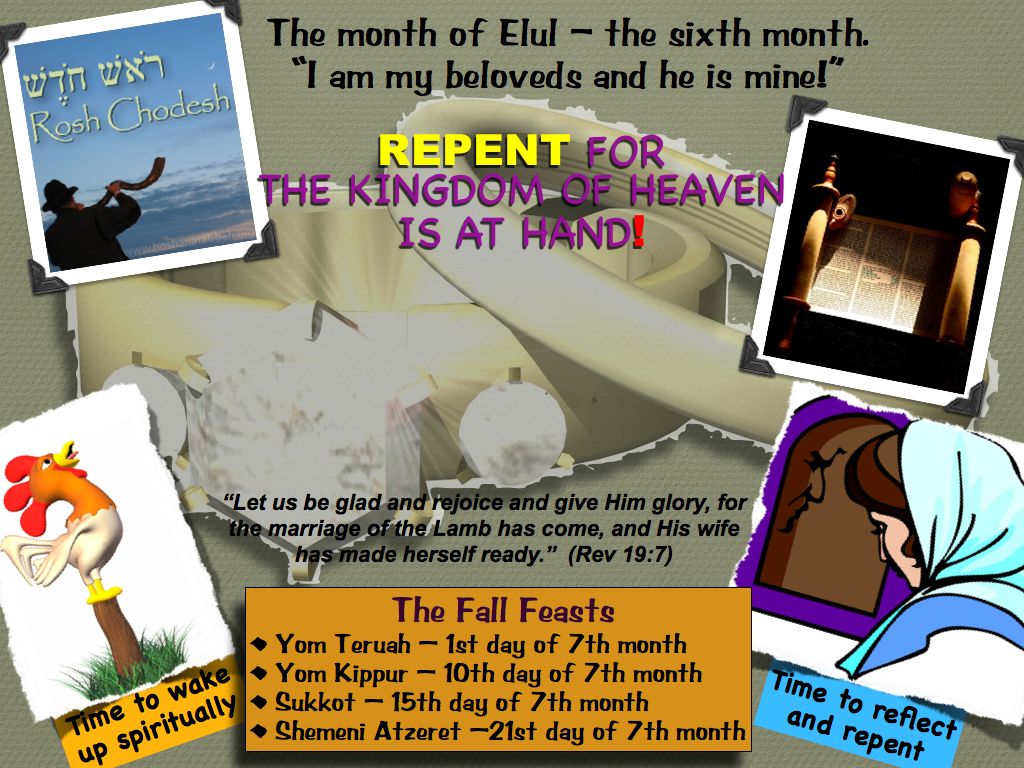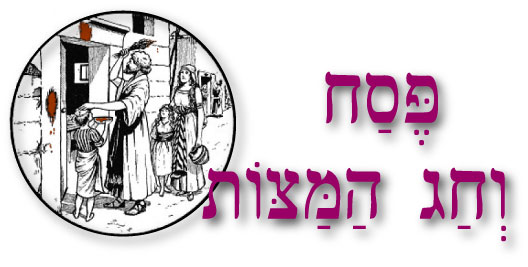Category Archives: Feasts
Preparing for Yom Teruah
Time to Awaken from Spiritual Slumber—Messiah Is Coming!
This year, the biblical festival of Yom Teruah (the Day of Shofar Blowing or Shouting or “Rosh Hashanah”) will likely be on Sunday, Sept. 8 according to the ancient biblical Hebrew calendar. This festival is a prophetically pictures the beginning of the events that will surround the second coming of our Lord, Yeshua the Messiah. It is time to get ready, for no man knows the day or the hour of the King’s coming!
“Arise thou that sleepest, and arise from the dead, and Messiah shall give thee light.” (Eph 5:14, also 8–16)
Yom Teruah or the Day of Shouting or the Shofar Blasts (commonly called “Rosh Hashanah”) occurs at the end of the summer months and marked the beginning of the fall harvest and biblical festival season for the ancient Hebrews. Prophetically, the summer months between the spring Feast of Weeks (Heb. Shavuot or Pentecost) and the fall feast of Yom Teruah is a spiritual picture of what is often called the “Church Age,” which is the period of time from the Feast of Pentecost in Acts 2 until the return of Yeshua the Messiah at the end of the age and lasting for approximately 2000 years. For many, especially those living in hotter climes, summer is a time of leisure, vacation, weariness and fatigue due to the excessive heat. Likewise, many Bible believers have fallen asleep spiritually growing weary while waiting for the return of the Messiah. Yeshua discusses this issue in the Parable of the Ten Virgins (Matt 25) who are all found snoozing awaiting the coming of the Bridegroom (Yeshua).
This all changes on the first day of the seventh month of the biblical Hebrew calendar when off in the distance the sound of a shout (or shofar blast?) suddenly pierces the atmosphere and awakens the virgins from their summer doldrums. Not only does the sound signal the beginning of the seventh month when the new crescent moon is sighted, but it announces the return of the Bridegroom (Yeshua) coming for his bride (the virgin saints). As in the Parable of the Ten Virgins, the cry went forth that the bridegroom was coming and all awoke from their slumber to prepare for his arrival. In these end days, that cry is going forth even now for all to hear, to awake and to prepare for the arrival of Yeshua the Messiah.
In the biblical calendar, the visible sighting of the crescent new moon always marks the beginning of the month and is announced by the shofar blast (Ps 81:3). Likewise, on the first day of the seventh month of the biblical calendar, the arrival of the new moon (Heb. rosh chodesh) when the shofar sound marks the beginning of Yom Teruah. This is the first day of the fall (festival) harvest season and is the time when the call goes out for the Continue reading
Happy First Day of the Sixth Month of Elul
Today, the new moon was spotted in the land of Israel meaning this is the first day of the biblical month of Elul—the sixth month of the biblical calendar.
In one month, YHVH’s people will begin celebrating the fall biblical festivals, which prophetically point to events surrounding the second coming of our Lord and Savior, Yeshua the Messiah, and the establishment of his millennial kingdom on earth.
It’s time to awaken from the summer spiritual doldrums and to prepare yourself spiritually…! The King of kings is coming. Are you ready?
For more information on this important month, see my previous post, “Teshuvah: A Word YOU Need to Add to YOUR Lexicon” at http://hoshanarabbah.org/blog/2013/08/03/teshuvah/.
It’s Seder Night Live!
The Second Passover—A Second Chance for Salvation
Numbers 9:6–11, Defiled by a human corpse. This passage can also be understood allegorically.
The second Passover is a prophetic picture pertaining to the lost and scattered sheep of the house of Israel who, like those individuals in this passage, had been journeying in exile (just like the prodigal son in Yeshua’s parable) among the Gentiles in a foreign land and away from the land and Elohim of Israel.
In the process of their spiritual wandering, they have become defiled by sin and death (likened here to touching a human corpse), since the wages of sin is death (Rom 6:23), and all men have sinned and fallen short of the YHVH’s glory (Rom 3:23).
While in exile (again like the prodigal son in the parable), they awake to their spiritual apostasy and want to come back home to observe the Passover (a picture of redemption or salvation). Passover is the only biblical festival for which YHVH’s allows a make up.
At the first Passover in Egypt, those who weren’t in their houses under the lamb’s blood-painted doors fell under the death penalty for sin and were killed. This teaches us that Passover is a picture of man’s obtaining salvation through the blood of Yeshua, the Messiah who is the Lamb of Elohim.
YHVH desires that all men be saved and come to know Yeshua the Savior, and Passover is a picture of this. This is why he gives men a second chance to keep the Passover—he wants all to be saved (John 3:16; 2 Pet 3:9), including his lost, scattered, exiled and prodigal children from the house of Israel.
New Video: The Feast of Pentecost and the Bride of Yeshua
In this brief video, Natan Lawrence shows the relationship between the feast of Pentecost (or Shavuot), the marriage of YHVH to the children of Israel at Mt. Sinai, the wedding chuppah (canopy), the holy of holies, and the upper room experience on the day of Pentecost, and the marriage of Yeshua the Bridegroom to redeemed believers in the Song of Solomon.





